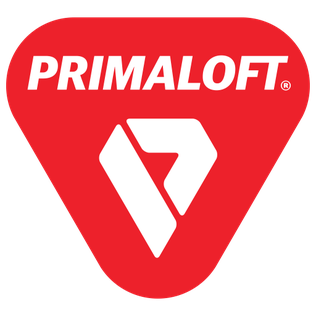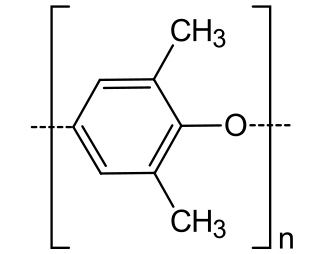
Textile is an umbrella term that includes various fiber-based materials, including fibers, yarns, filaments, threads, different fabric types, etc. At first, the word "textiles" only referred to woven fabrics. However, weaving is not the only manufacturing method, and many other methods were later developed to form textile structures based on their intended use. Knitting and non-woven are other popular types of fabric manufacturing. In the contemporary world, textiles satisfy the material needs for versatile applications, from simple daily clothing to bulletproof jackets, spacesuits, and doctor's gowns.

Fiber or fibre is a natural or artificial substance that is significantly longer than it is wide. Fibers are often used in the manufacture of other materials. The strongest engineering materials often incorporate fibers, for example carbon fiber and ultra-high-molecular-weight polyethylene.

A cushion is a soft bag of some ornamental material, usually stuffed with wool, hair, feathers, polyester staple fiber, non-woven material, cotton, or even paper torn into fragments. It may be used for sitting or kneeling upon, or to soften the hardness or angularity of a chair or couch. Decorative cushions often have a patterned cover material, and are used as decoration for furniture.

Poly(methyl methacrylate) (PMMA) is the synthetic polymer derived from methyl methacrylate. It is used as an engineering plastic, and it is a transparent thermoplastic. PMMA is also known as acrylic, acrylic glass, as well as by the trade names and brands Crylux, Hesalite, Plexiglas, Acrylite, Lucite, and Perspex, among several others. This plastic is often used in sheet form as a lightweight or shatter-resistant alternative to glass. It can also be used as a casting resin, in inks and coatings, and for many other purposes.
Synthetic fibers or synthetic fibres are fibers made by humans through chemical synthesis, as opposed to natural fibers that are directly derived from living organisms, such as plants or fur from animals. They are the result of extensive research by scientists to replicate naturally occurring animal and plant fibers. In general, synthetic fibers are created by extruding fiber-forming materials through spinnerets, forming a fiber. These are called synthetic or artificial fibers. The word polymer comes from a Greek prefix "poly" which means "many" and suffix "mer" which means "single units"..

Polyethylene terephthalate (or poly(ethylene terephthalate), PET, PETE, or the obsolete PETP or PET-P), is the most common thermoplastic polymer resin of the polyester family and is used in fibres for clothing, containers for liquids and foods, and thermoforming for manufacturing, and in combination with glass fibre for engineering resins.
Ingeo is a range of polylactic acid (PLA) biopolymers owned by NatureWorks.

Microfibre is synthetic fibre finer than one denier or decitex/thread, having a diameter of less than ten micrometers.

Polybutylene terephthalate (PBT) is a thermoplastic engineering polymer that is used as an insulator in the electrical and electronics industries. It is a thermoplastic (semi-)crystalline polymer, and a type of polyester. PBT resists solvents, shrinks very little during forming, is mechanically strong, is heat-resistant up to 150 °C, and can be treated with flame retardants to make it noncombustible. It was developed by Britain's Imperial Chemical Industries (ICI).

Bedding, also called bedclothes or bed linen, is the materials laid above the mattress of a bed for hygiene, warmth, protection of the mattress, and decorative effect. Bedding is the removable and washable portion of a human sleeping environment. Multiple sets of bedding for each bed are often washed in rotation and/or changed seasonally to improve sleep comfort at varying room temperatures. Most standardized measurements for bedding are rectangular, but there are also some square-shaped sizes, which allows the user to put on bedding without having to consider its lengthwise orientation.

Thinsulate is a brand of synthetic fiber thermal insulation used in clothing. The word is a portmanteau of the words thin and insulate, trademarked by 3M. The material is made by the 3M Corporation and was first sold in 1979. It was originally marketed as an inexpensive alternative to down; at the time, 3M claimed it was twice as warm as an equivalent amount of any natural material.

Cordura is a collection of synthetic fiber-based fabrics used in a variety of products including luggage, backpacks, trousers, military wear, and performance apparel.

Polyester is a category of polymers that contain one or two ester linkages in every repeat unit of their main chain. As a specific material, it most commonly refers to a type called polyethylene terephthalate (PET). Polyesters include naturally occurring chemicals, such as in plants and insects, as well as synthetics such as polybutyrate. Natural polyesters and a few synthetic ones are biodegradable, but most synthetic polyesters are not. Synthetic polyesters are used extensively in clothing.

Tontine is an Australian manufacturer of pillows and quilts. The company can trace its origins back to 1870 when the Galt family commenced manufacturing in Melbourne. From 1984–2001 it was owned by Pacific Dunlop. The Tontine group was part of Pacific Brands until early 2017. Tontine is now owned by John Cotton Group. Until 2007 the company's manufacturing base was at East Brunswick, Victoria. Tontine Fibres is a division of United Bonded Fabrics a separate company manufacturing polyester insulation, air filtration, carpet underlays, geotextiles and a range of mattress and furniture comfort products and using the Tontine trademark under license.

A sponge is a cleaning aid made of soft, porous material. Typically used for cleaning impervious surfaces, sponges are especially good at absorbing water and water-based solutions.

Transfer paper is used in textiles and arts and crafts projects. Transfer paper is a thin piece of paper coated with wax and pigment. Often, an ink-jet or other printer is used to print the image on the transfer paper. A heat press can transfer the image onto clothing, canvas, or other surface. Transfer paper is used in creating iron-ons. Transfer papers can also be used for the application of rhinestones to clothing and other arts and crafts projects.

PrimaLoft® is a brand of patented synthetic microfiber thermal insulation material that was developed for the United States Army in the 1980s. PrimaLoft is a registered trademark of PrimaLoft, Inc., the brand's parent company.

Poly(p-phenylene oxide) (PPO), poly(p-phenylene ether) (PPE), poly(oxy-2,6-dimethyl-1,4-phenylene), often referred to simply as polyphenylene oxide, is a high-temperature thermoplastic with the general formula (C8H8O)n. It is rarely used in its pure form due to difficulties in processing. It is mainly used as blend with polystyrene, high impact styrene-butadiene copolymer or polyamide. PPO is a registered trademark of SABIC Innovative Plastics B.V. under which various polyphenylene ether resins are sold.

A thread is a long strand of material, often composed of several filaments or fibres, used for joining, creating or decorating textiles. Ancient Egyptians were known for creating thread using plant fibers, wool and hair. Today, thread can also be made of many different materials including but not limited to cotton, wool, flax, nylon, silk, polyester etc. There are also metal threads, which can be made of fine wire.

















